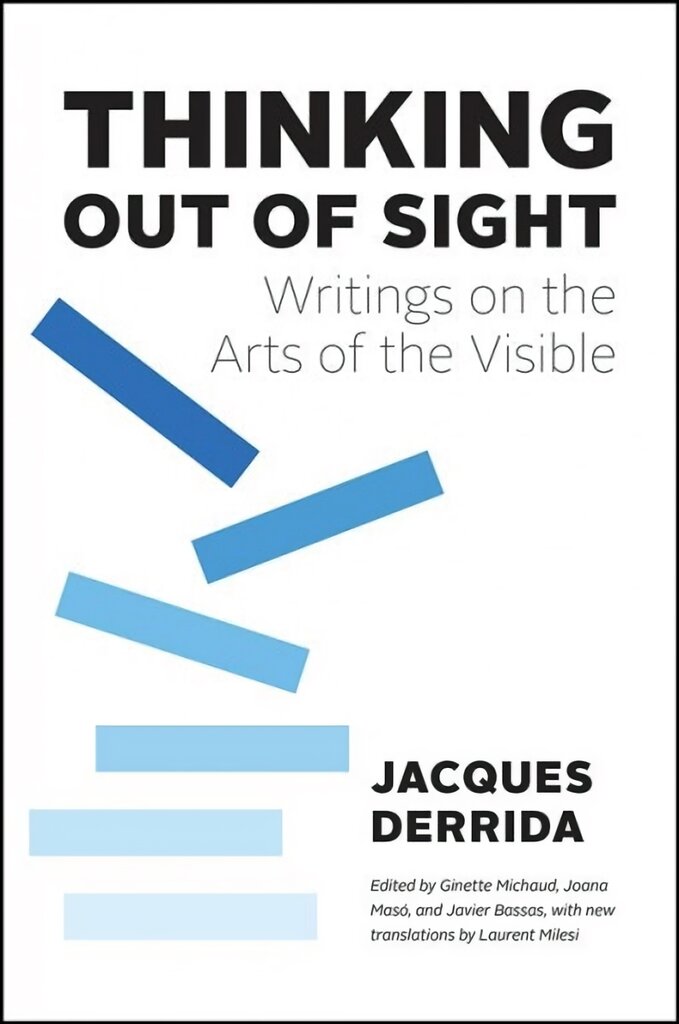„Derrida is one of the few Continental philosopher-critics as esteemed for his writings about visual topics as for his attention to more textually based subjects. This volume collects key and scarce writings about the making and apprehension of „visual objects,” though the chief focus is on drawing, painting, and photography (with sorties into video and film). What preoccupied Derrida when it came to the visual arts is visibility: what does a pencil actually trace-make visible- when someone is making a drawing? What aspect of the drawing documents the artist’s thought and what part documents an external object? What comes from painting other than a painting? The writings collected range from essays originally published in small magazines and journals to never-before translated talks and interviews. There are 19 pieces in all, of which seven have been previously published in English.. The rest have been translated into English for the first time. None is included in the Press’s already substantial inventory of works by Derrida. The collection comprises three thematic sections: (1) „The Traces of the Visible” is attuned to the field’s preoccupation with the „trace,” what is an „image,” visibility, and space. (2) „Rhetoric of the Line: Painting, Drawing” engages nearly every register in which one can experience art: the materiality of line and text, the eros of aesthetic experience, the politics of color, and the components of painting, writing and drawing taken together. (3) „Spectralities of the Image: Photography, Video, Cinema and Theatre” explores the media we most readily associate with modern and contemporary art practices”–
Jacques Derrida remains a leading voice of philosophy, his works still resonating today&;and for more than three decades, one of the main sites of Derridean deconstruction has been the arts. Collecting nineteen texts spanning from 1979 to 2004, Thinking out of Sight brings to light Derrida&;s most inventive ideas about the making of visual artworks. The book is divided into three sections. The first demonstrates Derrida&;s preoccupation with visibility, image, and space. The second contains interviews and collaborations with artists on topics ranging from the politics of color to the components of painting. Finally, the book delves into Derrida&;s writings on photography, video, cinema, and theater, ending with a text published just before his death about his complex relationship to his own image. With many texts appearing for the first time in English, Thinking out of Sight helps us better understand the critique of representation and visibility throughout Derrida&;s work, and, most importantly, to assess the significance of his insights about art and its commentary.
Jacques Derrida remains a leading voice of philosophy, his works still resonating today&;and for more than three decades, one of the main sites of Derridean deconstruction has been the arts. Collecting nineteen texts spanning from 1979 to 2004, Thinking out of Sight brings to light Derrida&;s most inventive ideas about the making of visual artworks. The book is divided into three sections. The first demonstrates Derrida&;s preoccupation with visibility, image, and space. The second contains interviews and collaborations with artists on topics ranging from the politics of color to the components of painting. Finally, the book delves into Derrida&;s writings on photography, video, cinema, and theater, ending with a text published just before his death about his complex relationship to his own image. With many texts appearing for the first time in English, Thinking out of Sight helps us better understand the critique of representation and visibility throughout Derrida&;s work, and, most importantly, to assess the significance of his insights about art and its commentary.
Daugiau prekių iš šios kategorijos
- Derrida’s Focus on Visual Art and Visibility: Derrida’s work extensively explores the concept of visibility in visual arts, examining what constitutes a visible trace in drawing, painting, and other media.
What is the main focus of Derrida’s writings on visual arts as presented in this collection?
The main focus of Derrida’s writings on visual arts in this collection is on visibility, specifically on what makes a trace visible in drawing, painting, and media, and how these traces document artistic thought and external objects.








